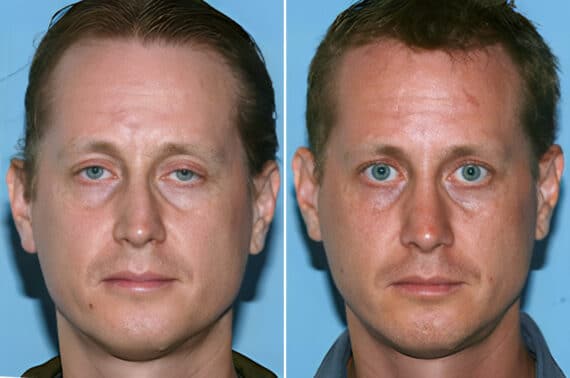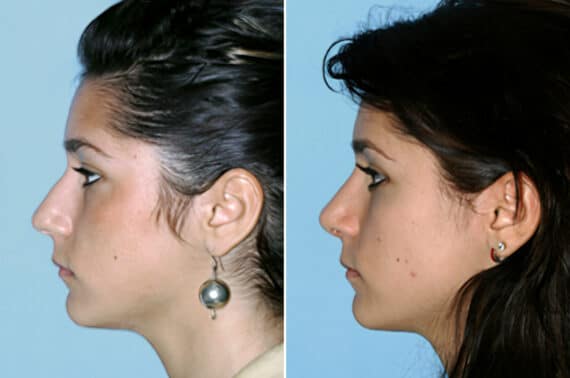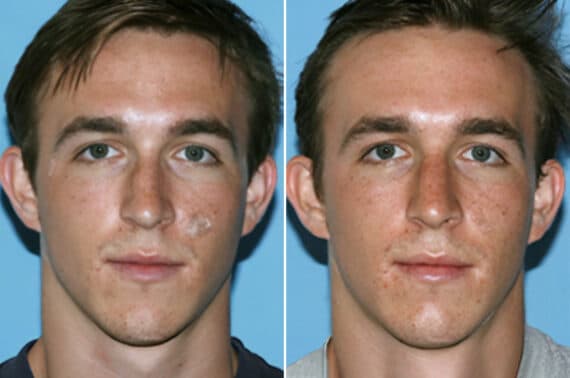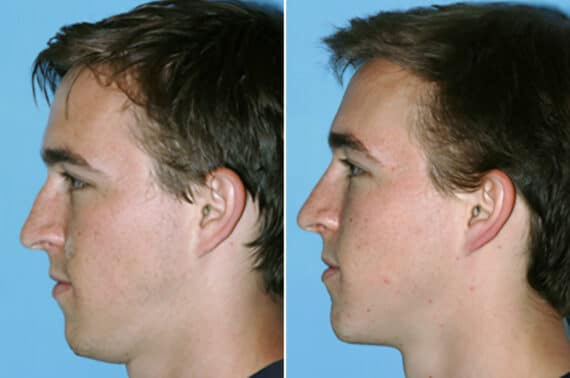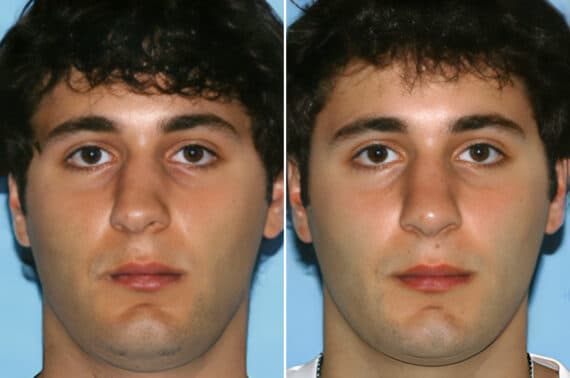The success rate of revision rhinoplasty depends on several factors, including the complexity of the case, the surgeon’s expertise, and the patient’s healing process. While more challenging than primary rhinoplasty, this procedure can significantly improve both appearance and function when performed by a skilled surgeon. Many patients achieve satisfying results, especially when working with an experienced specialist.
A survey conducted by Oxford Academic and published in the Aesthetic Surgery Journal, found that around 10% of rhinoplasty patients seek a revision. selecting an expert surgeon like Dr. Benjamin Swartout can make the difference.
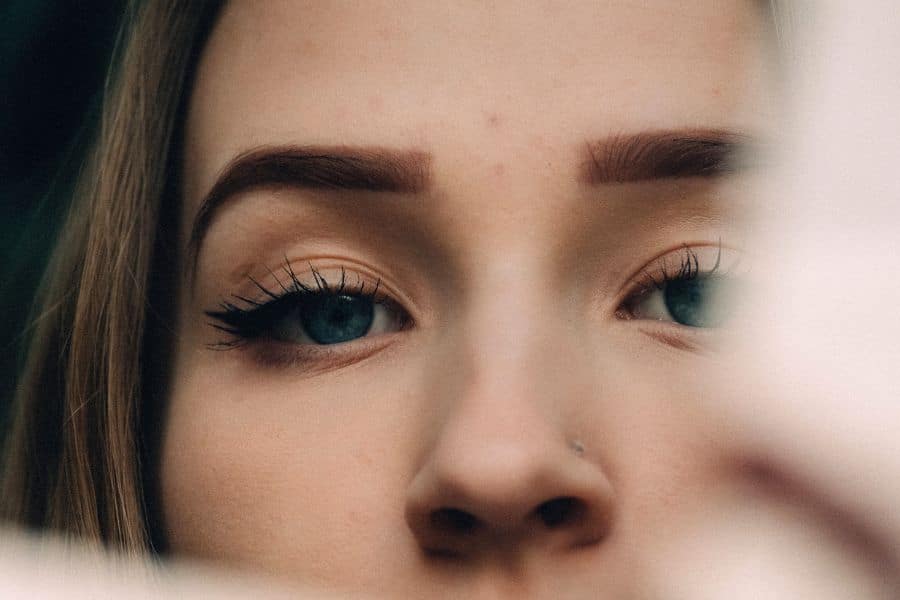
Essential Insights on Revision Rhinoplasty Surgery Success
- Revision rhinoplasty has a lower success rate than primary rhinoplasty due to scar tissue and structural challenges.
- The skill and experience of the surgeon are the most critical factors in achieving a successful revision rhinoplasty outcome.
- The number of previous surgeries affects the complexity and success rate of the procedure.
- Proper postoperative care and realistic expectations play an essential role in patient satisfaction.
- Consulting a highly qualified facial plastic surgeon, such as Dr. Benjamin Swartout, increases the likelihood of a positive outcome.
Key Factors for Successful Outcomes in Revision Rhinoplasty
Surgeon’s Skill and Experience
One of the most important factors in revision rhinoplasty success is the experience of the surgeon. This procedure requires an advanced understanding of nasal anatomy and expertise in reconstructive and aesthetic techniques. Dr. Benjamin Swartout specializes in revision rhinoplasty, offering patients expert care to improve both nasal appearance and function.
An experienced surgeon will assess the patient’s nasal structure, discuss previous surgeries, and create a customized plan to achieve the best possible results. Because revision rhinoplasty is more complicated than primary rhinoplasty, selecting a surgeon with a proven track record of success in this field is essential.

Quality of the Nasal Tissue
The condition of the nasal skin and cartilage significantly affects revision rhinoplasty outcomes. Patients with healthy, flexible skin and sufficient cartilage for structural support tend to have higher success rates. If nasal tissue has been excessively damaged or compromised due to previous surgeries, additional reconstructive techniques may be required.
Nasal tissue elasticity can also affect the final result. Rigid or overly thick skin can make precise refinements more difficult, while thin skin may reveal minor irregularities. During the consultation, Dr. Swartout carefully evaluates nasal tissue to determine the best approach for achieving optimal results.
Number of Previous Surgeries
Each additional nose surgery increases scar tissue and weakens the nasal structure, making revision procedures more complex. Patients who have undergone multiple rhinoplasty surgeries may require advanced reconstructive techniques to restore both form and function.
The more surgeries a patient has had, the more difficult it is to achieve an ideal result. Scar tissue buildup can limit the surgeon’s ability to reshape the nose effectively, and previous alterations to the nasal framework may necessitate cartilage grafts or structural reinforcements.
Before & After Photos
*Each patient is unique and individual results may vary.
Complications That Lower the Success Rate of a Revision Nose Job
Too Much Scar Tissue
Scar tissue from previous cosmetic surgery can make it difficult to achieve precise refinements and may limit the surgeon’s ability to reshape the nose effectively. This can also increase healing time and lead to additional complications such as nasal stiffness or asymmetry.
Weak or Damaged Nose Structure
Excessive removal of cartilage or inadequate support from an initial nose surgery can lead to a collapsed nasal structure, requiring cartilage grafts for reinforcement. If the nasal framework is not properly supported, the nose may become deformed or experience functional issues such as breathing difficulties.
Not Enough Cartilage for Repairs
If the initial rhinoplasty surgery removed too much cartilage, the surgeon may need to use grafts from the ear, rib, or synthetic materials to rebuild the nasal framework. Cartilage grafting is essential for restoring structural integrity and achieving a balanced nasal appearance.
Poor Blood Flow to the Nose
Multiple surgeries can reduce blood circulation to the nasal tissues, slowing down healing and increasing the risk of complications. Poor blood flow can lead to tissue necrosis, prolonged swelling, and less predictable outcomes.
Higher Chance of Infection and Healing Problems
Because revision rhinoplasty involves working with previously altered tissue, there is an increased risk of infection, prolonged swelling, and delayed healing. Patients should follow all postoperative instructions carefully to minimize these risks.
Expectations of Patients That Are Hard to Meet
Patients should have realistic expectations regarding revision rhinoplasty results. While improvements are often possible, perfect symmetry and complete correction may not always be achievable. Open communication with the surgeon is crucial for ensuring that goals are aligned with realistic outcomes.

Fix Primary Rhinoplasty Mistakes with Expert Revision
Join our satisfied clients who’ve experienced safe, effective treatments.
Surgical Techniques That Improve the Success Rate of Revision Rhinoplasty

Cartilage Grafting for Better Support
Cartilage grafting helps reinforce weakened nasal structures, improving both function and aesthetics. Common sources for grafts include the septum, ear, and rib. Structural grafts are particularly beneficial for patients who have experienced nasal collapse or loss of support.
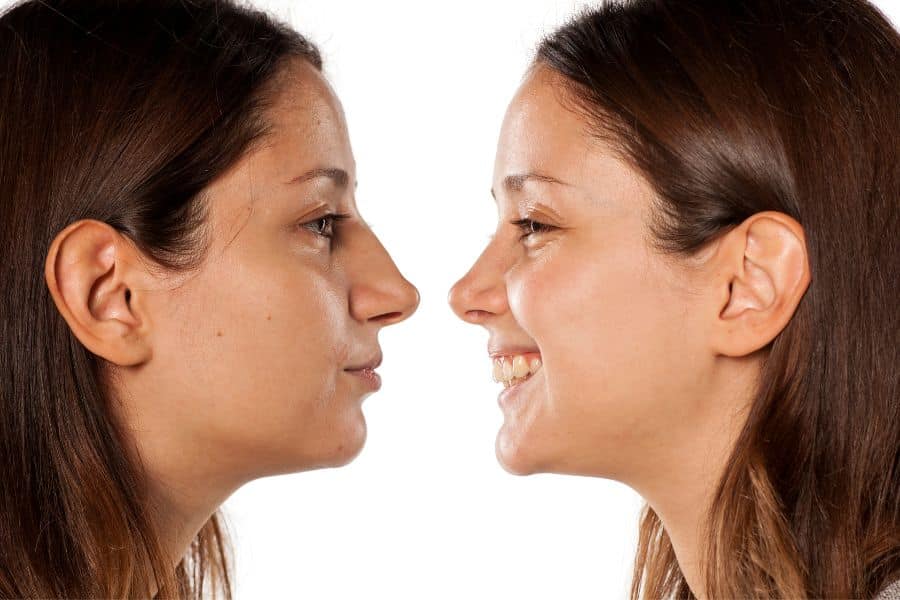
Open Approach for Better Visibility
In many cases, surgeons use the open rhinoplasty technique, which provides better visibility and precision compared to the closed approach. This allows for more comprehensive reshaping and a higher degree of control over the final outcome.
Rhinplasty Recovery Tips to Get the Best Results from Your Revision Rhinoplasty
- Follow all postoperative care instructions provided by your surgeon.
- Avoid strenuous activities and protect your nose from accidental bumps.
- Reduce swelling by keeping your head elevated and applying cold compresses as instructed.
- Be patient—revision rhinoplasty recovery can take longer than primary rhinoplasty, with final results appearing over 12 to 18 months.
- Attend all follow-up appointments to ensure proper healing and address any concerns early.
Choose an Experienced Surgeon for Revision Rhinoplasty Success
Choosing the right surgeon for revision rhinoplasty can make all the difference. A skilled surgeon will not only correct previous issues but also enhance nasal aesthetics and functionality, helping patients achieve long-lasting, natural-looking results. Dr. Swartout takes a personalized approach to each case, utilizing advanced surgical techniques to optimize outcomes.
Additionally, an expert revision rhinoplasty surgeon understands the importance of thorough patient consultations, setting realistic expectations, and providing detailed postoperative care. With Dr. Swartout’s expertise, patients can feel confident in their journey toward a successful revision rhinoplasty.
If you are considering revision rhinoplasty, schedule a consultation today to discuss your options with Dr. Benjamin Swartout and take the first step toward achieving your desired results.

